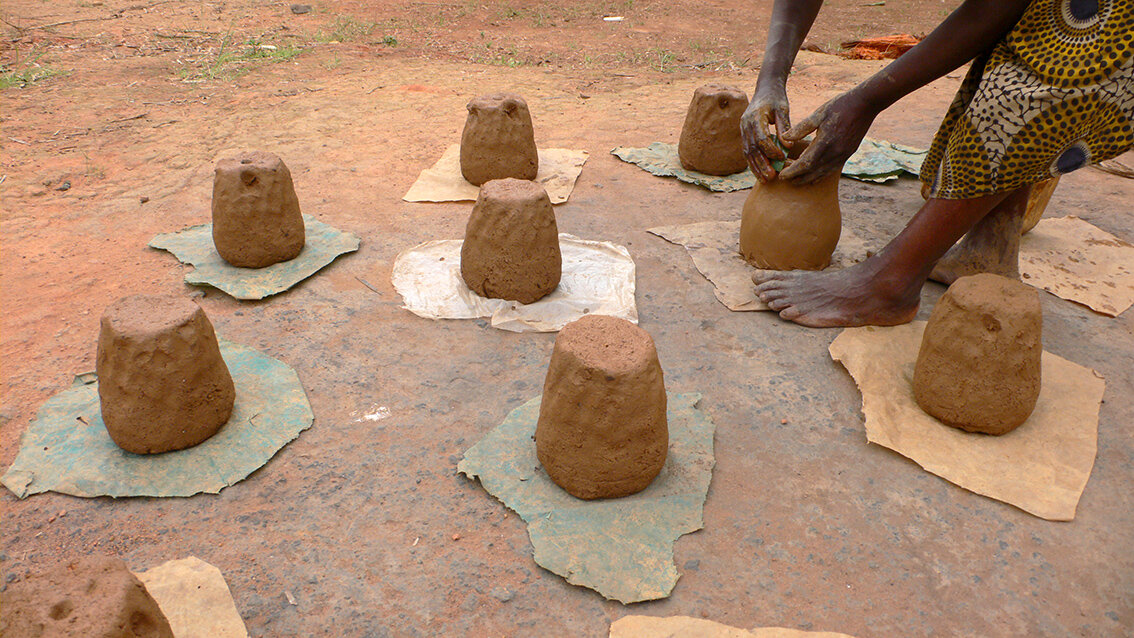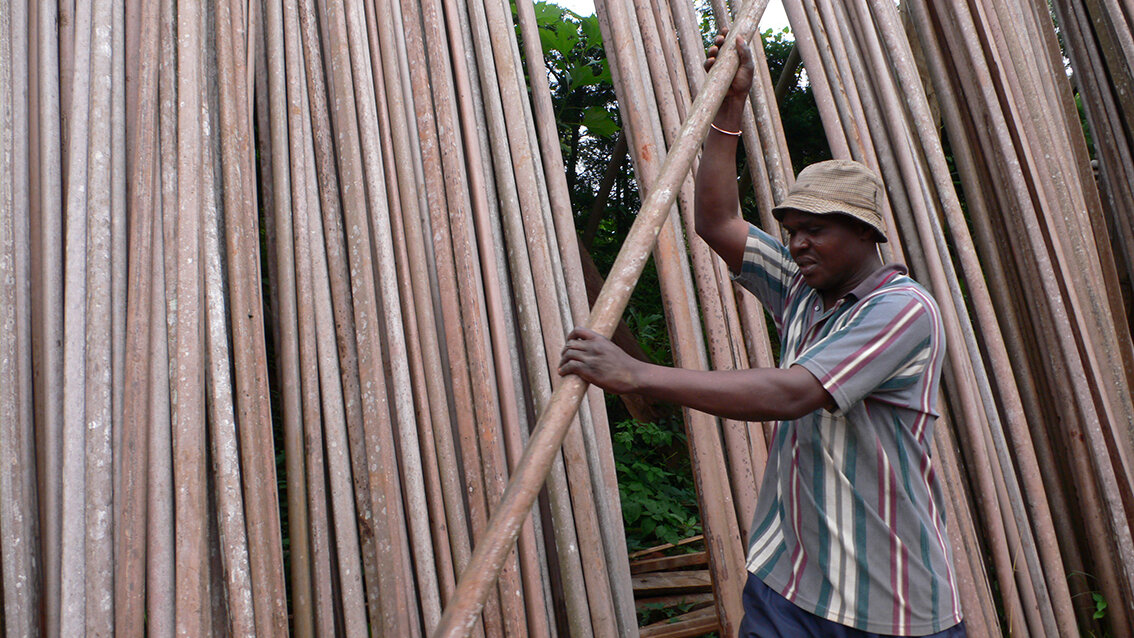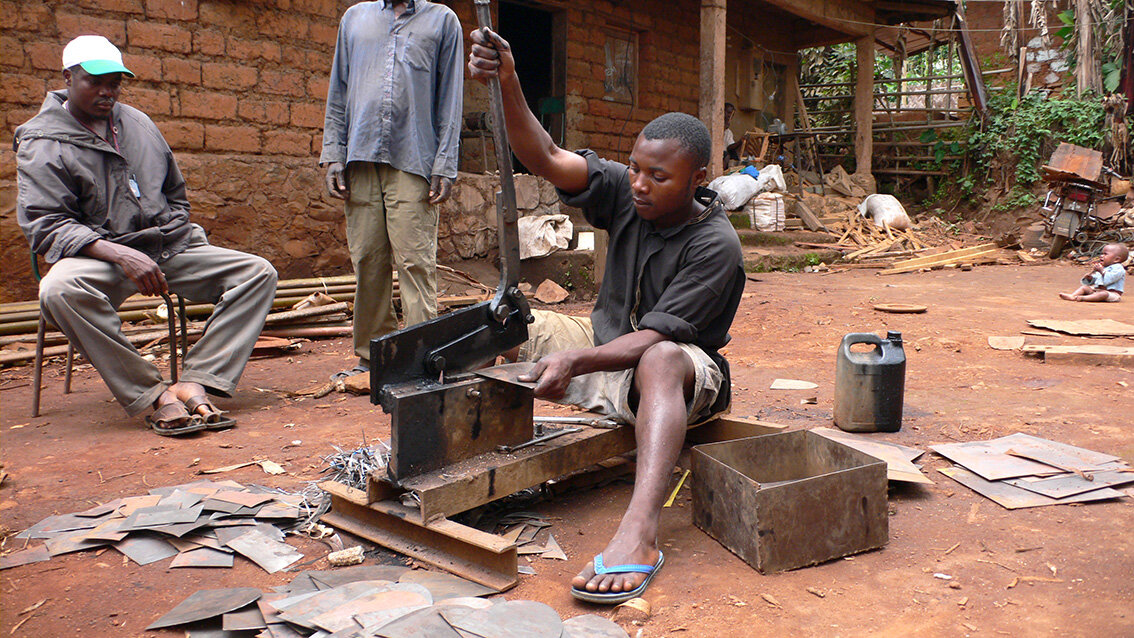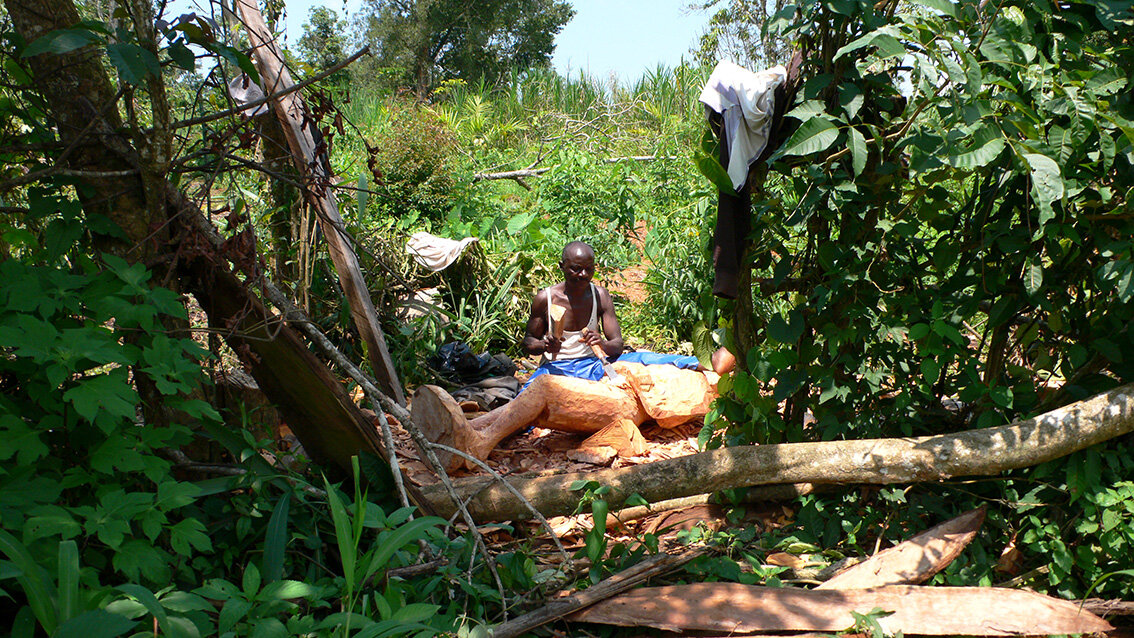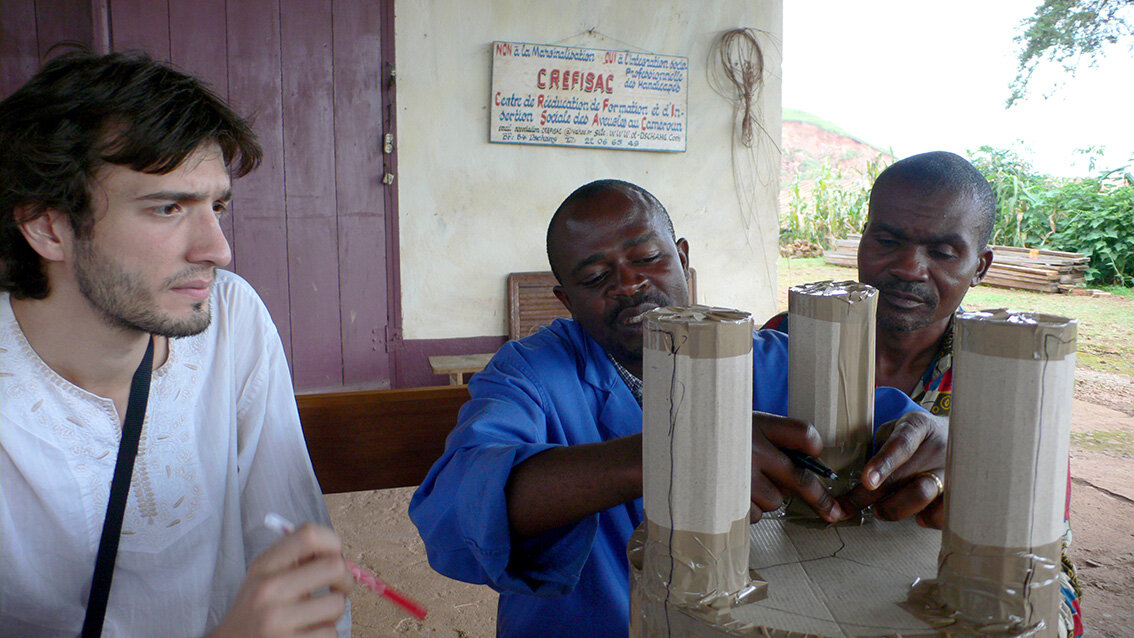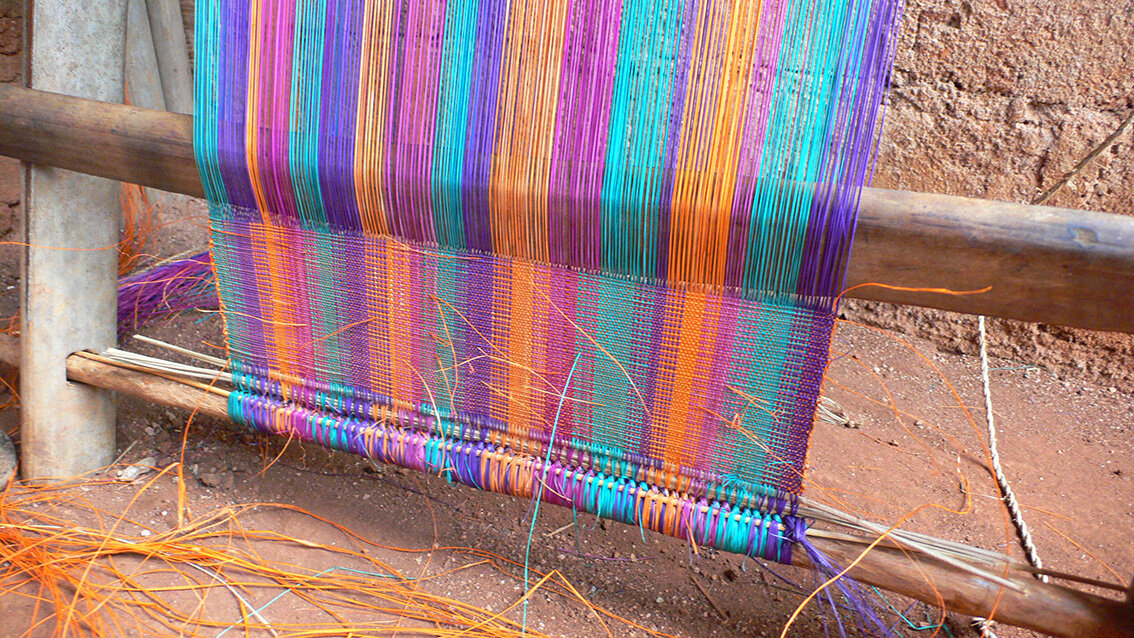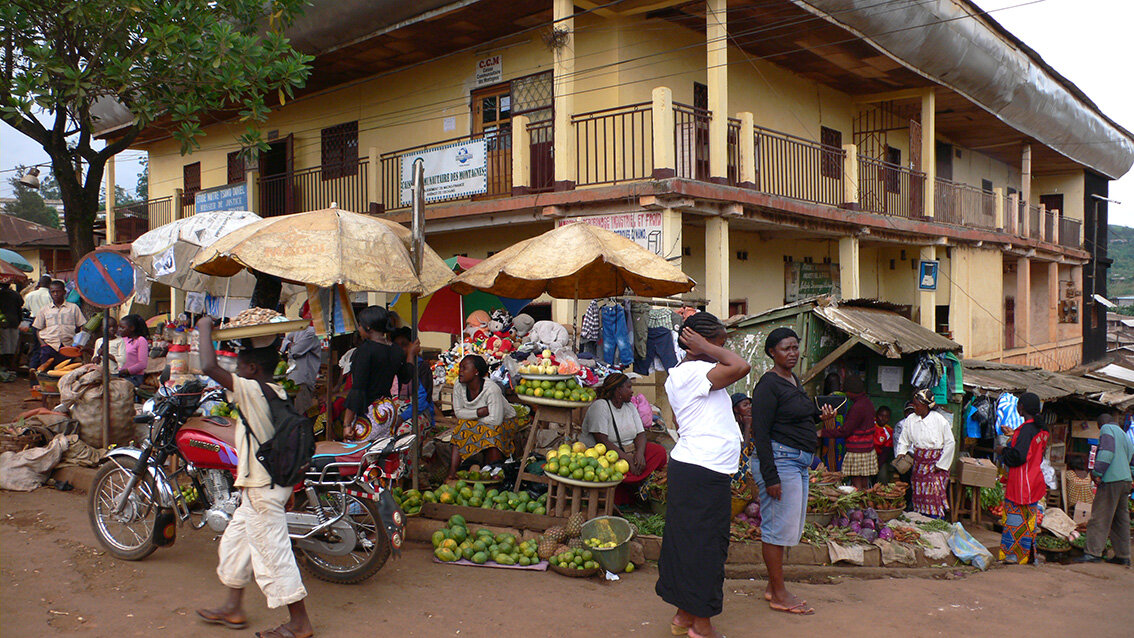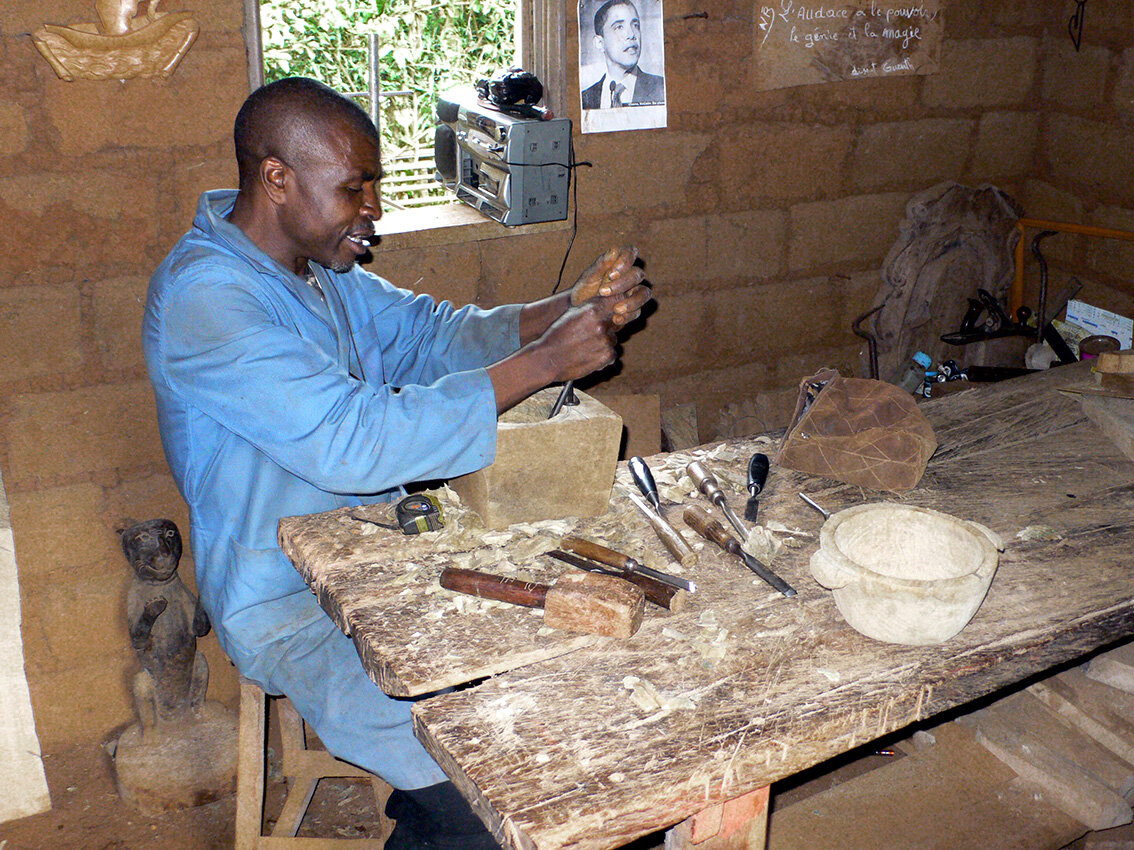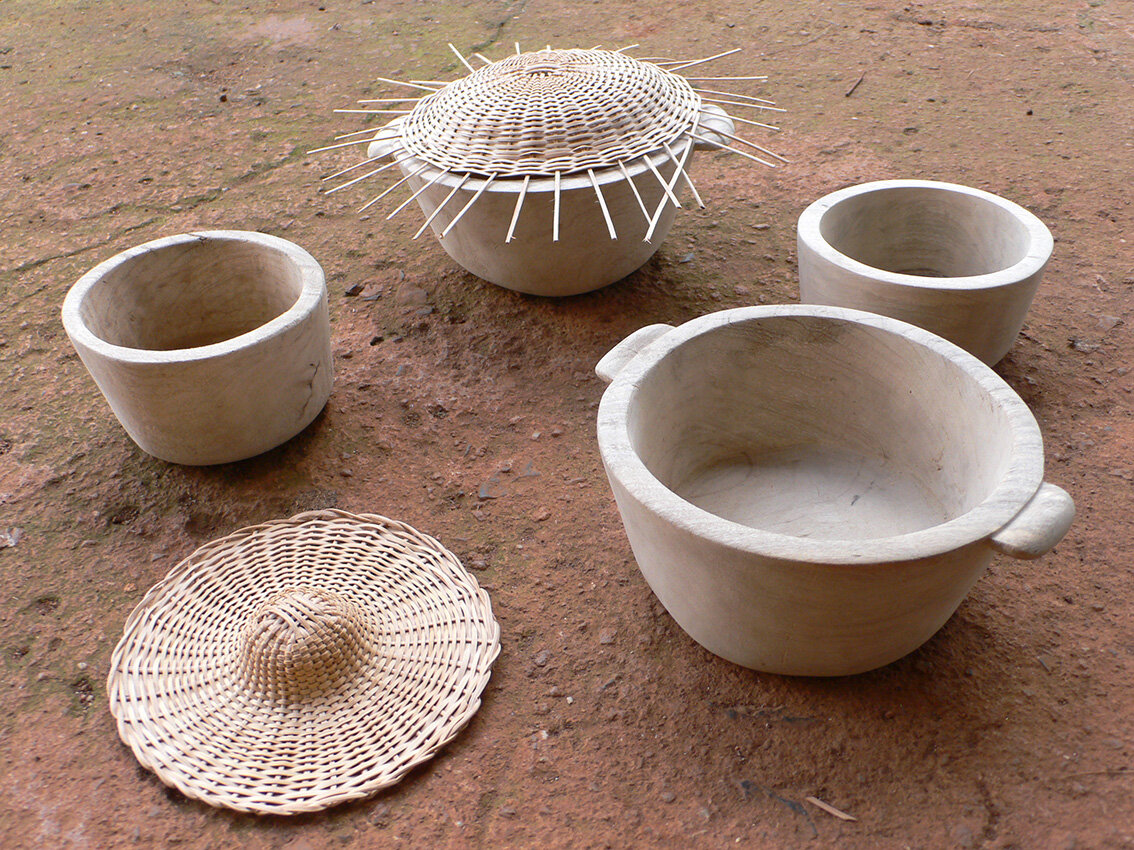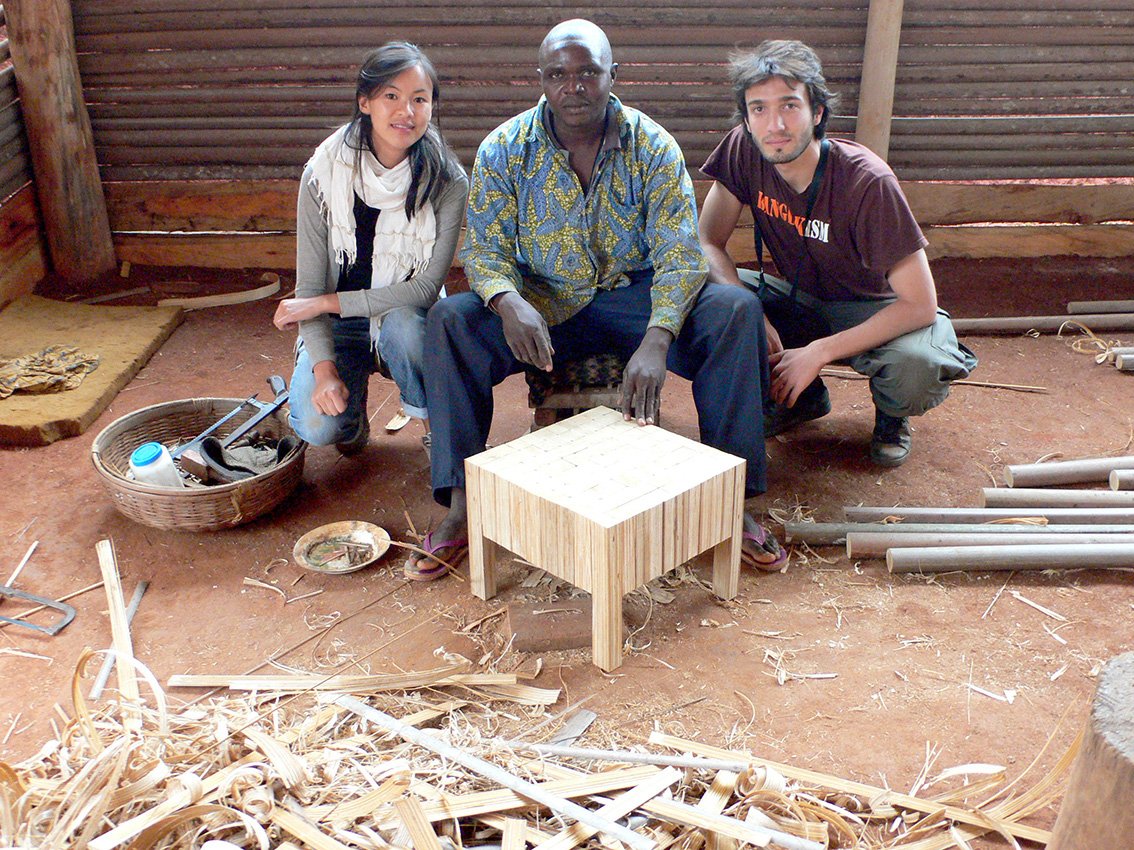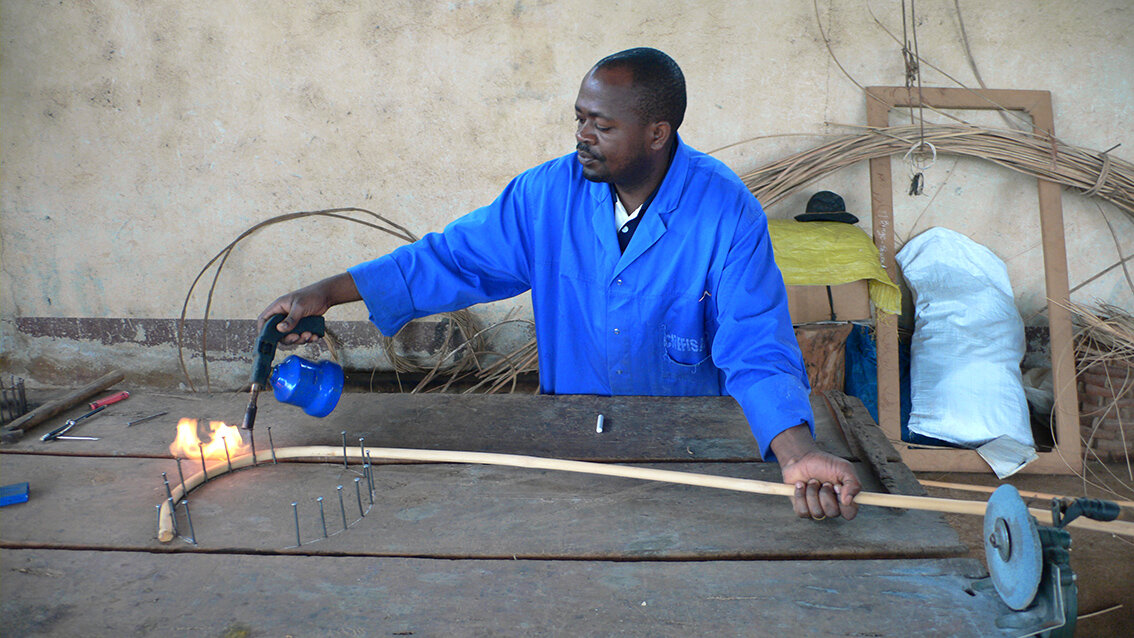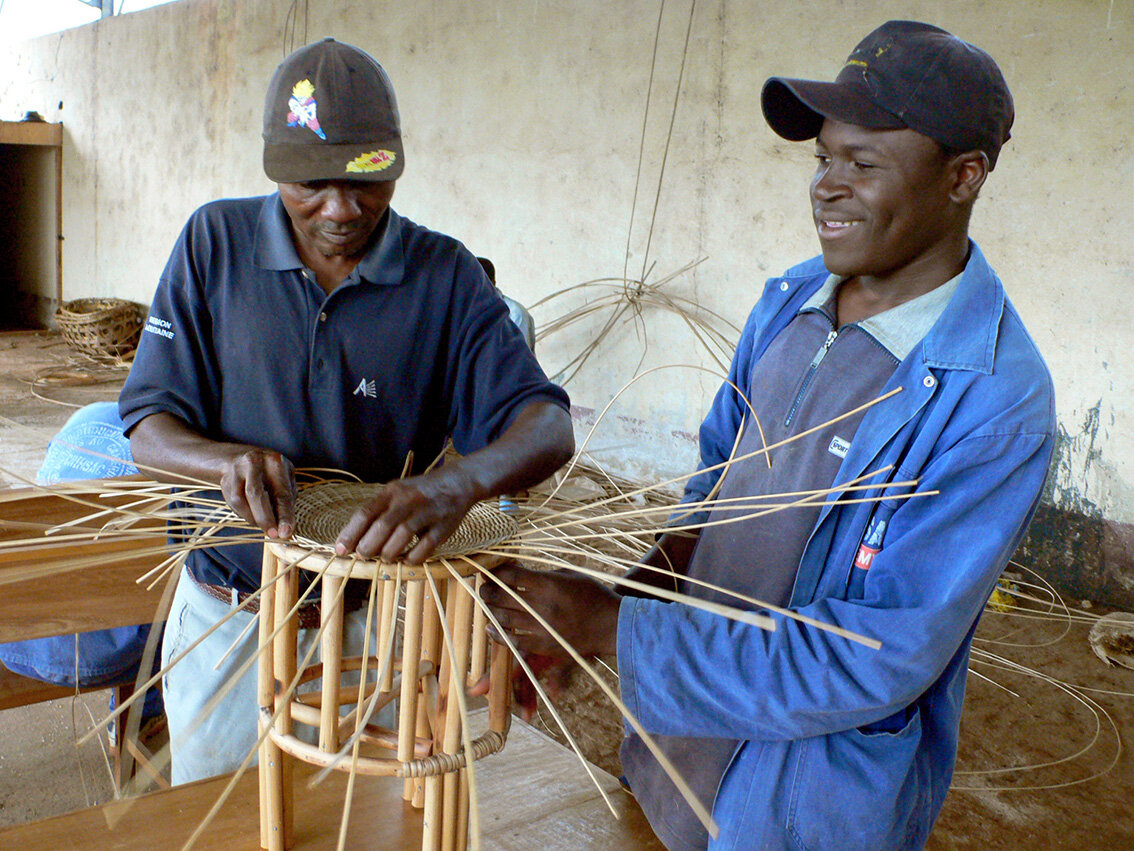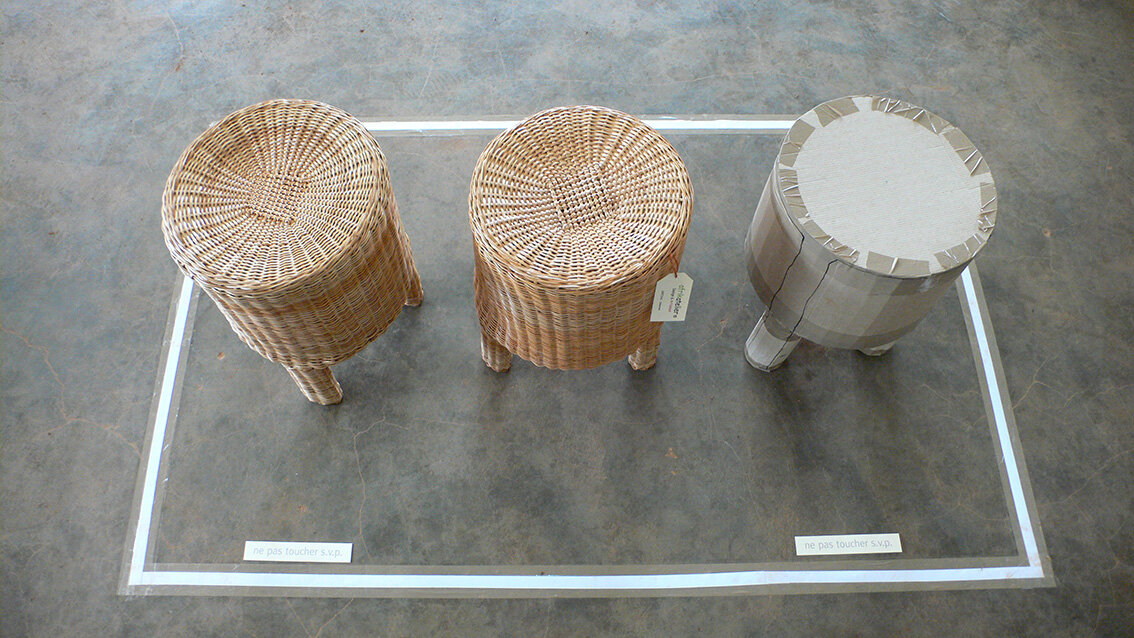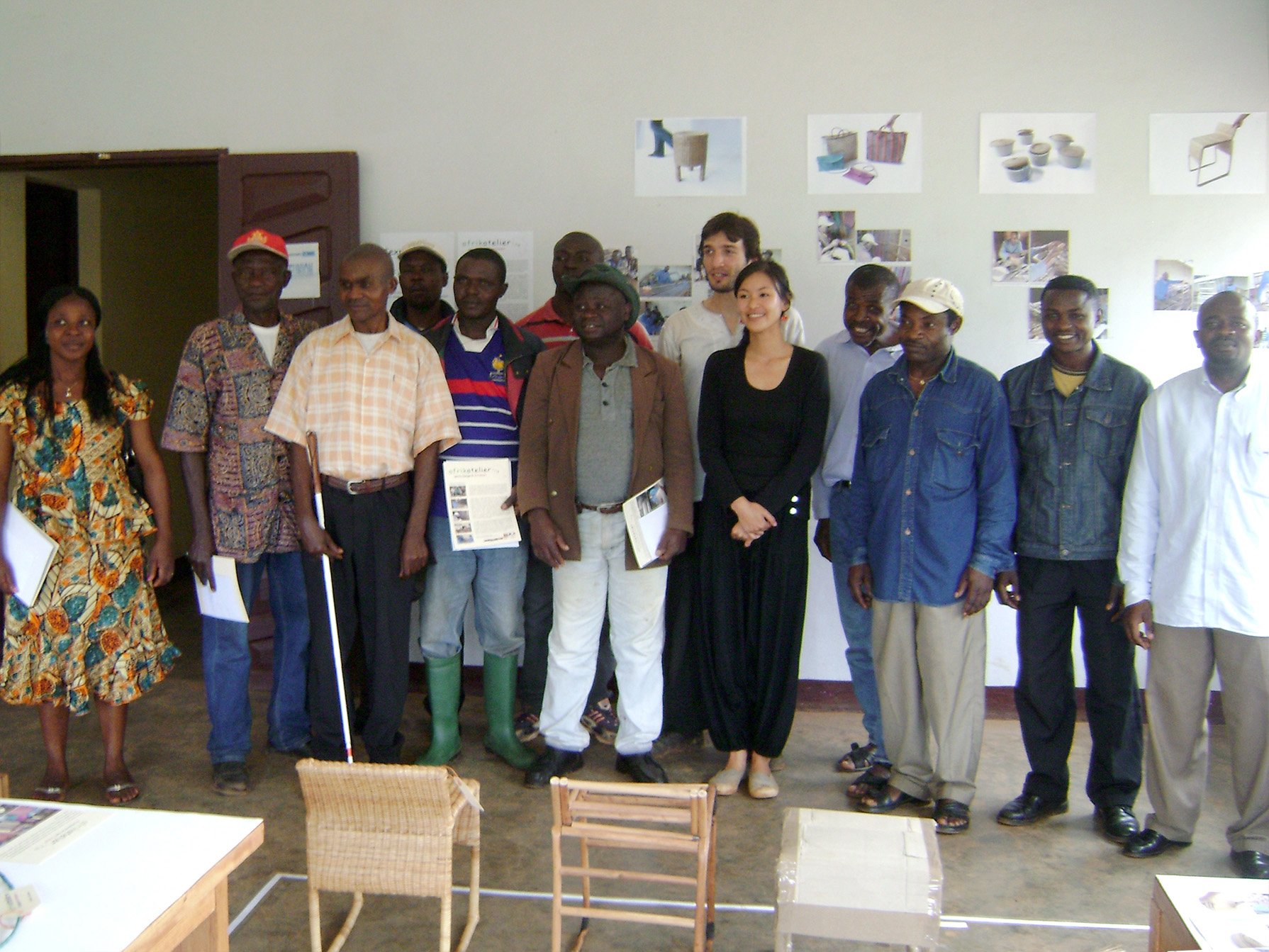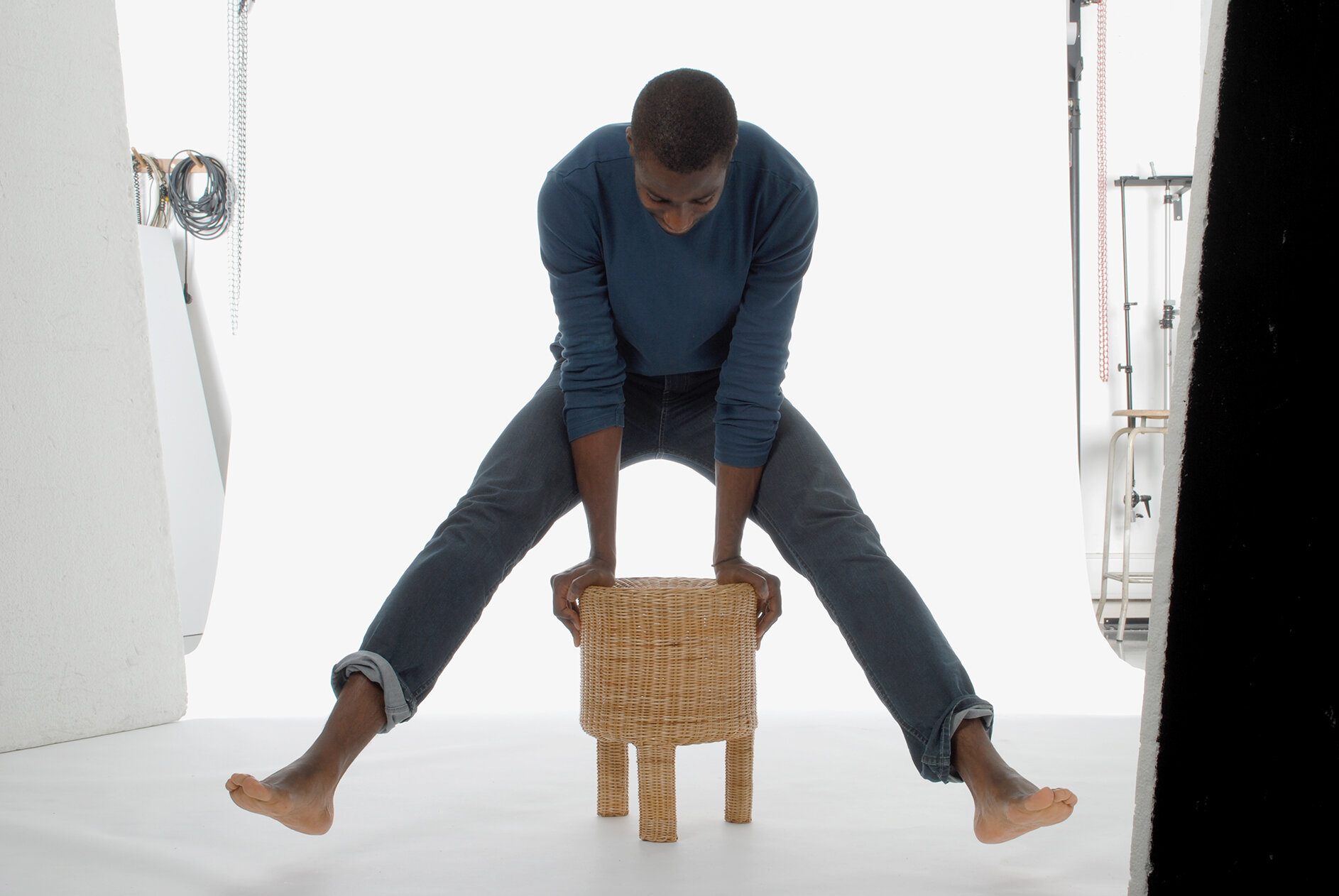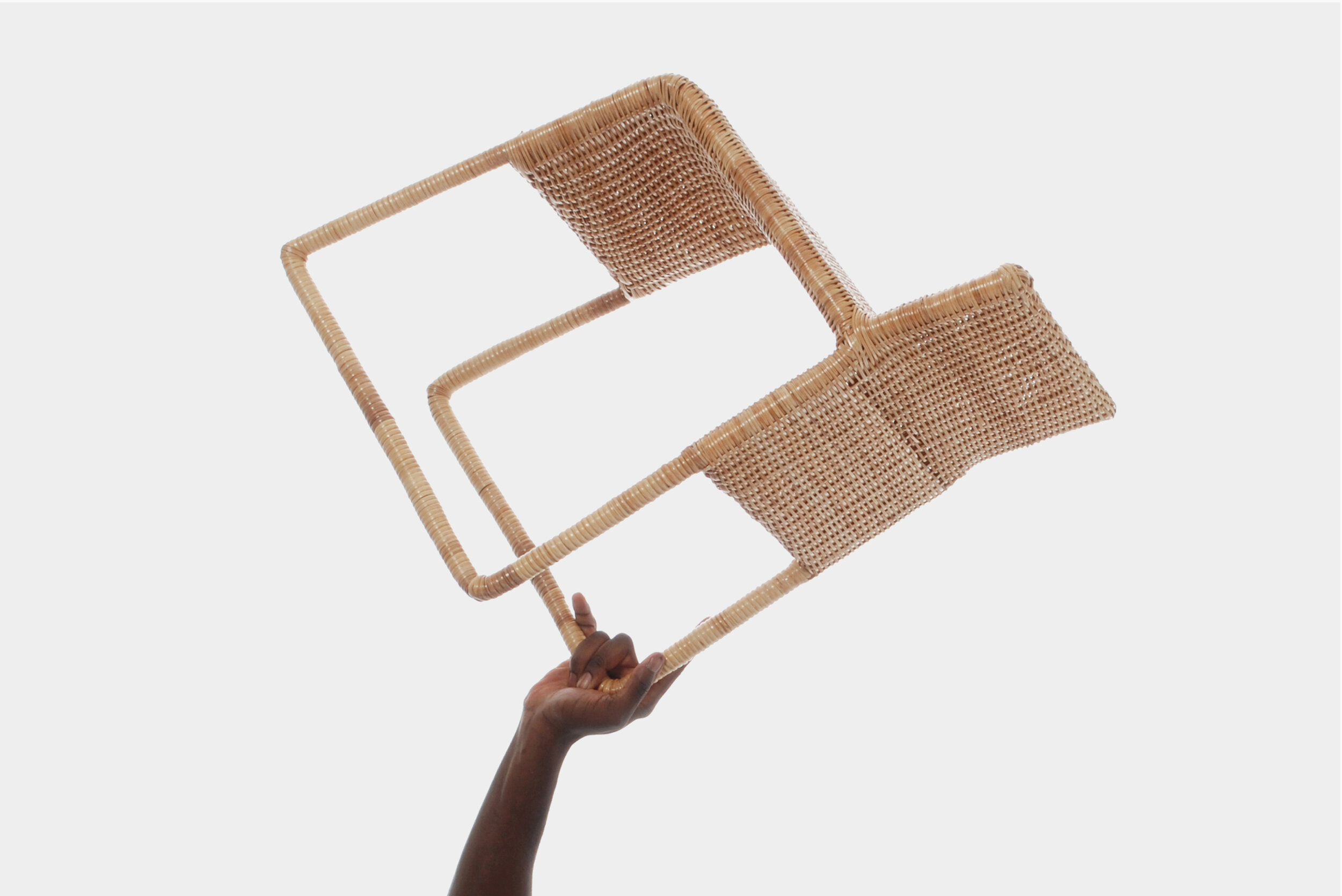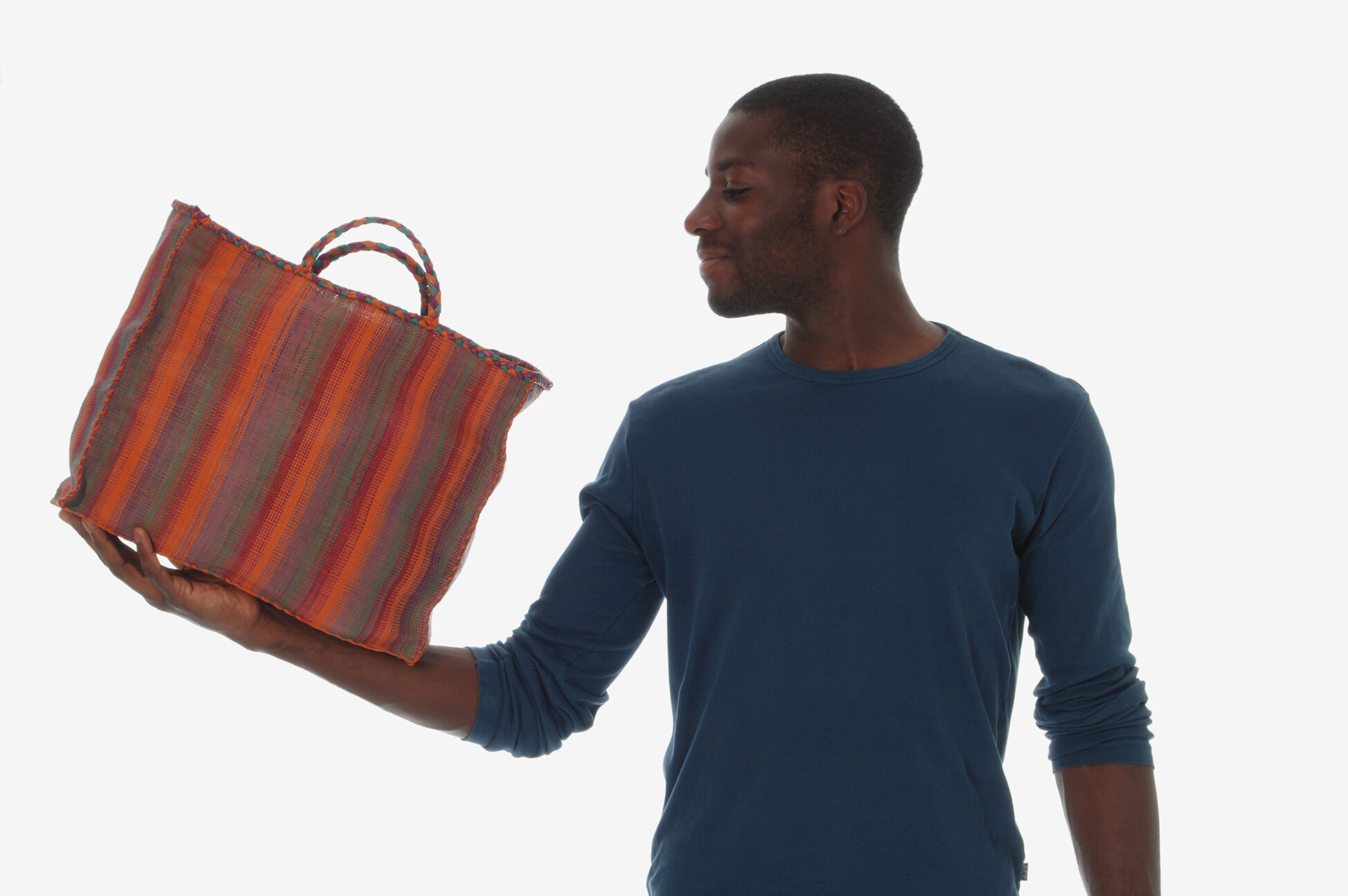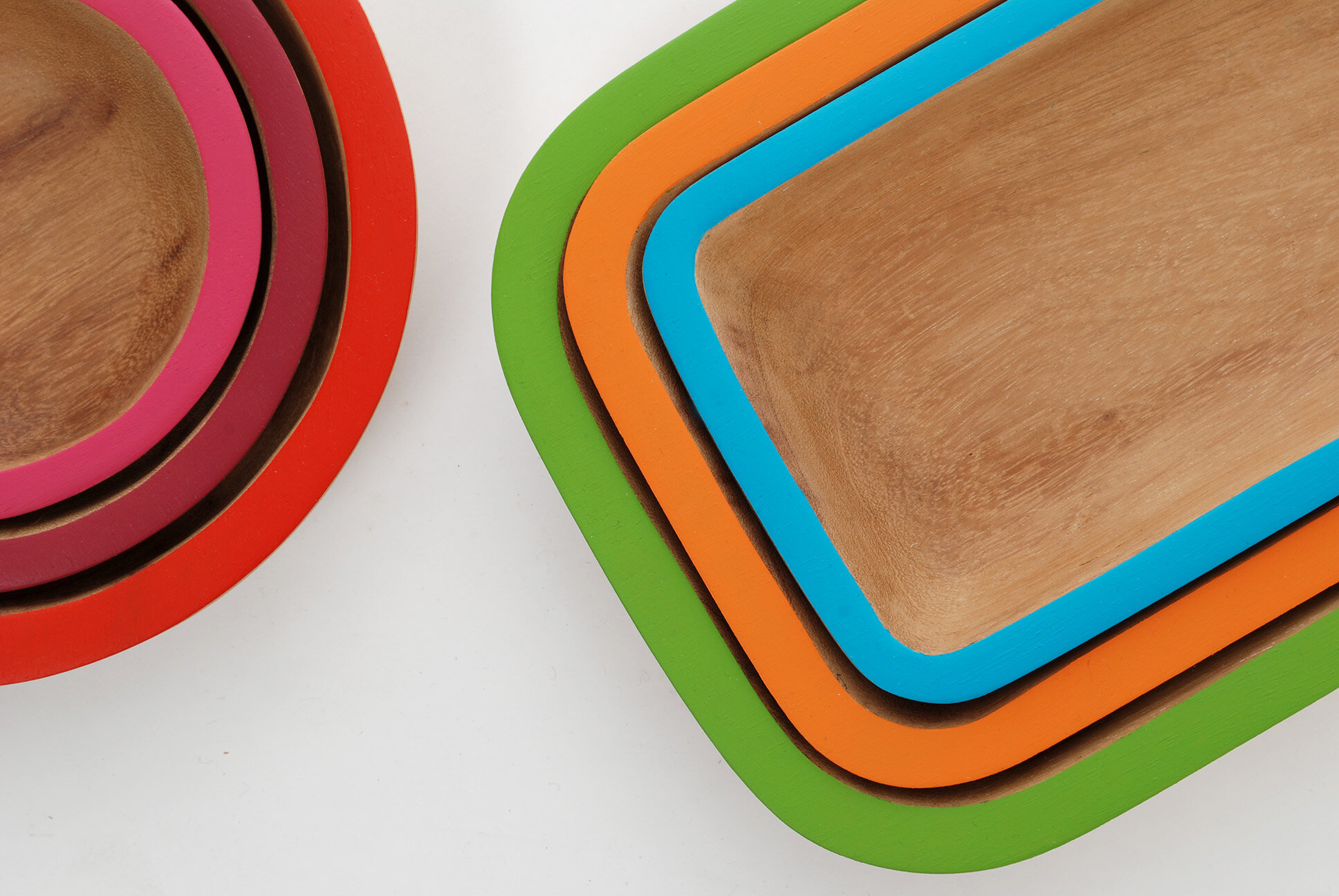Handicraft in Cameroon
Initiated by the Ecole du Patrimoine Africain, this project aimed at developing cultural exchanges by sending designers to meet the African continent and its craftsmen. This exchange between two cultures of the object, different but complementary, represents a great challenge for the creation of unique artifacts, outcome of the alchemy between traditional skills and the will to innovate in design methods.
Site
Dschang, Cameroon
Date
July - August 2009
Team
Amandine Chhor (designer)
Aïssa Logerot (designer)
Odile Coppey (curator)
Ecole du Patrimoine Africain (local collaborator)
Crefisac (blind craftsmen cooperative)
Tato (wood sculptor)
Tanazeu (bamboo weaver)
Pierre Donton (bamboo craftsman)
―
In this context, i.d.o was invited to Cameroon to collaborate with the craftsmen of the Menoua region. Our project was born first from an observation: today, handicraft is not diversified and struggles to survive in a context of industrial production. Indeed, many objects from African crafts have lost their meaning because they are not used anymore in local life and are only created for tourist trade. Therefore we went to meet the artisans of Dschang city and surrounding villages, with the aim to develop methods and design tools together to diversify their production in the long term, and create objects from the meeting of two cultures and expertises.
―
Relying on local expertise, we created a range of products from different materials such as iroko and sapeli solid woods, rattan and bamboo raffia fibers. The objects and pieces of furniture we designed propose to reinterpret some African Bamileke codes and traditional shapes (like the three feet stool) in order to give them an anchorage in contemporary life and uses. For example, Taneze had never used bamboo raffia fibers to create volumic shapes, but only 2D products like wallets. With the Crefisac organization, we developed a few models of seats, to highlight the structural potential of rattan in addition to its lightness.
What we’ve done:
1.
We went to meet various craftsmen of the town of Dschang and surrounding villages to present and explain the project’s aims, and try to convince them to get involved in this collaboration. The idea was hand in hand work a few days a week for each craftsmanship.
2.
We developed methods and design tools together to diversify their production in the long term, and took into account both local and occidental uses in the process.
3.
We created various objects resulting from the meeting of two cultures and expertises, namely a small raffia bamboo table, two rattan seats, a family of wooden and rattan pots, a range of woven raffia bamboo bags, a collection of wooden dishes.
4.
We set up collaborations between different craftsmen to highlight the creative potentials of collaborations. The weavers made a range of lids for small wooden containers, whereas an artist painted abstract and symbolic patterns on the wooden dishes.
5.
We developed communication media like cardboard labels for each product, leaflets for the craftsmen, and set up an exhibition at the end of our stay to present and showcase the project and the work of all the craftsmen in the presence of local and political actors.

